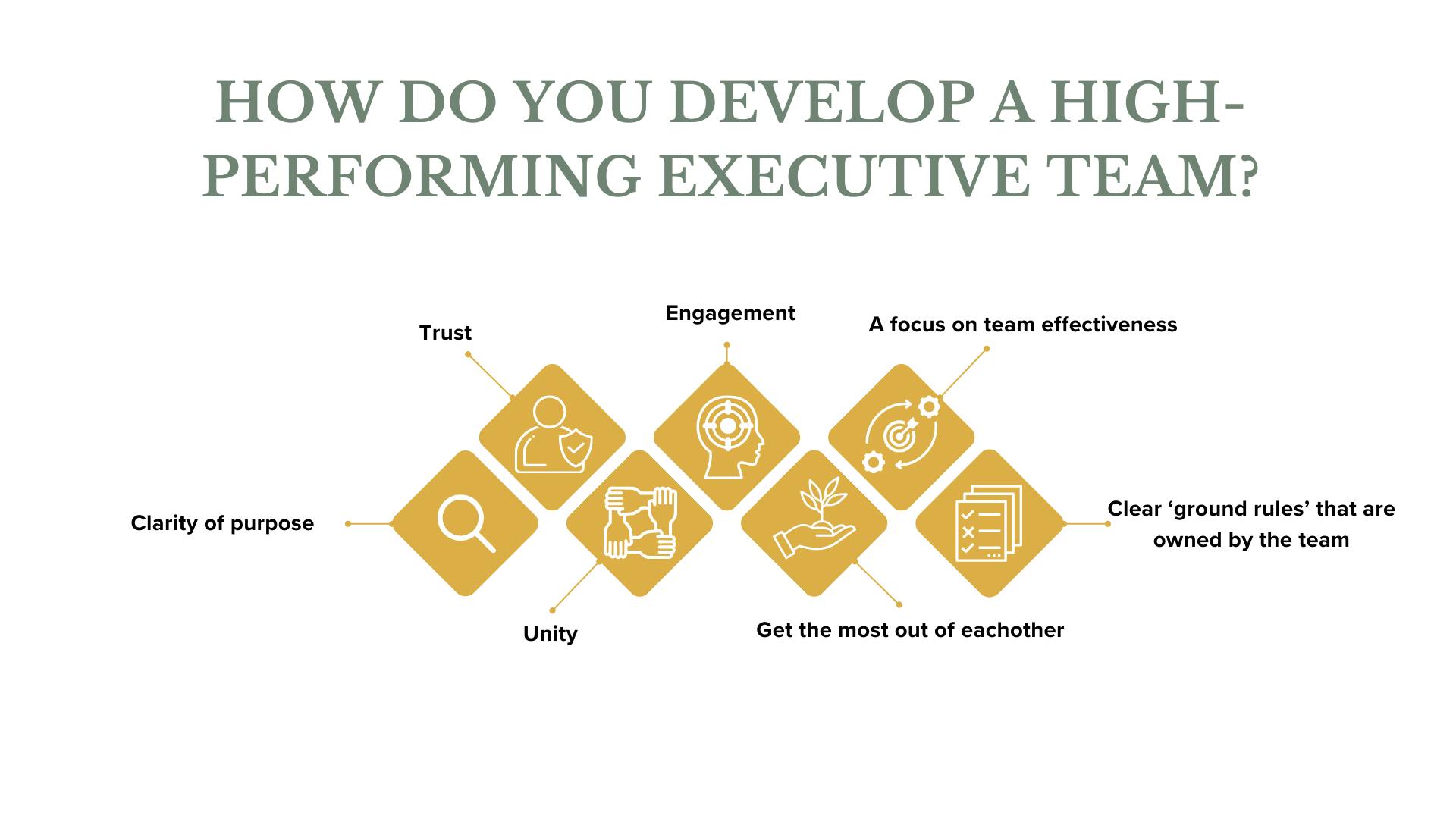Posted on 03 Mar 2024
Author: John Wadsworth
The benefits of a high-performing leadership team have long been understood. They consistently outperform their competition. They consistently deliver results through good times and bad. They create an environment within which they and the people they lead thrive.
You know when you are part of one. And you know when you are not. So what is the difference? What takes a leadership team from a group of individuals to a true team? From leading silos to leading the organisation?

In our experience, there are seven common attributes of a high-performing leadership team.
- Clarity of purpose. High-performing executive teams are clear on the team’s purpose. The purpose of the team is to achieve outcomes that individuals in the team can’t achieve on their own. Otherwise, there is no point in having a team. Clarity of purpose enables individuals to contribute to and benefit from, something bigger than themselves. In this way, the team adds value to each of the members. With a clarity of purpose, the team’s agenda and time are focussed on topics that relate to that purpose. The members of high-performing executive teams are loyal and committed to their leadership team’s purpose first and the needs of their own functional areas second.
- Trust. Trust is the glue of a high-performing executive team. Trust fosters open communication, enables honest conversations, deepens engagement, and creates a context for giving and receiving feedback. Trust is critical to collaboration that achieves outcomes that are greater than the sum of the individual parts. Trust underpins unity.
- Unity. Trust enables honest discussion, disagreement, and debate in the team. But when the team makes a decision, it is united behind that decision. If it is the wrong decision, they pivot. People who report to the team all hear the same version of the decision, with the same passion and commitment, irrespective of which leadership team member they report to. There are no silos.
- Engaged. All members of high-performing leadership teams are engaged. They believe in the purpose and vision. Their values and passions align. They bring high levels of leadership energy. They couldn’t imagine being anywhere else because they have the best job in the best organisation doing great things.
- Get the most out of each other. It would be a boring and ineffective team if everyone was the same. But difference brings complexity. Our grandparents taught us the Golden Rule – treat others as you wish to be treated. However, different people respond to different things, giving rise to the Platinum Rule – treat others as they wish to be treated. Understanding the team differences allows the team to harness the strengths and understand the blind spots, stressors, working styles, and mojo for each team member in order to get the most out of each other and enhance communication, collaboration, and trust.
- A focus on team effectiveness. High-performing teams focus not only on what they do but also on how they do it. Organisational context, challenges, opportunities, and team dynamics change constantly and often rapidly. High-performing executive teams take regular time-out to ensure they constantly work on the effectiveness of the team.
- Clear ‘ground rules’ that are owned by the team. High-performing executive teams openly discuss and agree on the values, behaviors, and expectations for each team member to commit to. Not everything will be perfect all of the time. These moments, and how they are handled, are the true test of a high-performing team. High-performing team members call out each other, not look to the CEO or leader to be the only person holding team members accountable. After all, the CEO or leader is only one member of the team, not its parent or referee.
It is not enough to be a group of effective individual leaders. The magic happens when those individuals act as a high-performing team. It is a source of competitive advantage worth investing in.

Author: John Wadsworth
John is the Chief Executive of the Institute for Strategic Leadership International Group. He has held executive roles across different industries throughout his career, including sport, business growth, and tertiary education. For better or worse, this article is an original - No ChatGPT or AI was used.
-
Interested in reading more articles by John and the ISL team? Visit our Resources section.
If you are keen to discuss developing your organisation's leadership potential - Get in touch. Our team has over 22 years experience working with leaders across the globe on their quest to be their best.






